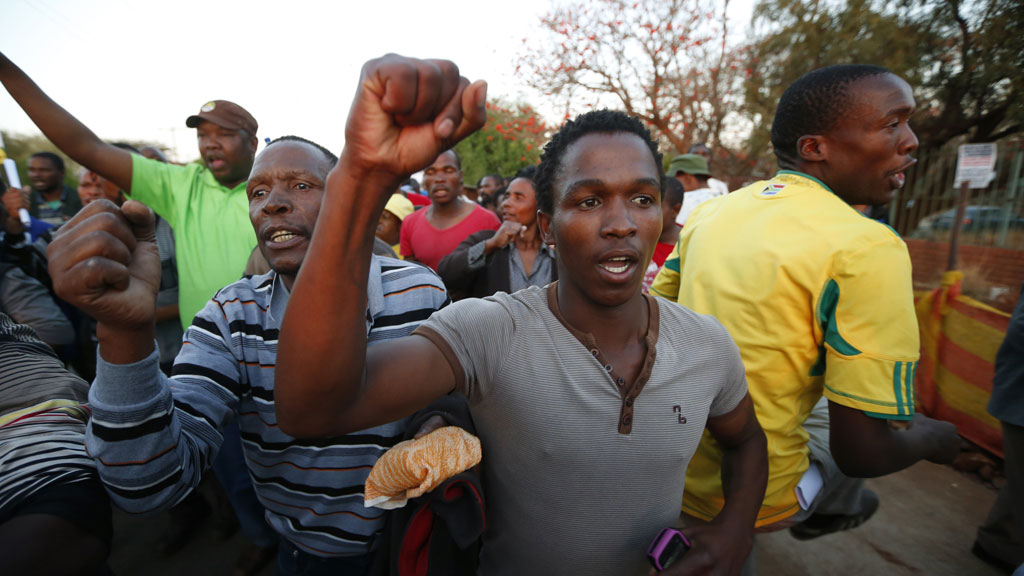Marikana mine strike: Q and A
A violent dispute at the Marikana platinum mine has already led to the deaths of over 44 people and caused a political storm well beyond the borders of South Africa. How did it come to this?

Q. Who is involved?
Around 3,000 rock-drill operators at the Marikana platinum mine 60 miles north west of Johannesburg in South Africa’s North West province. The mine is owned by Lonmin (formerly Lonrho, the London-based firm once linked with the takeover of Harrods department store), employs 28,000 people and estimates say it produces 95 per cent of the company’s platinum output.
Q. What is the strike about?
On 10 August the workers demanded a more than fifty per cent increase in their salaries to around £940 per month. An impasse developed leading to the workers downing tools and arming themselves with machetes, sticks and knives as the pay dispute became a violent confrontation.
The action has been complicated by in-fighting among the unions representing workers, the National Union of Mineworkers (NUM) and a newer, rival union called the Association of Mineworkers and Construction Union (AMCU) which was formed by breakaway members of the NUM.
Q. What happened after the workers walked out?
Following a week-long standoff, on 16 August, police opened fire on the striking miners (though the details about who attacked who first are disputed) killing 34 and injuring a further 78. The previous week 10 people were killed including security guards and miners who had apparently resisted joining AMCU which, it has been reported, encouraged the strike.
The miners killed two policemen and mutilated their corpses. Miners also discovered the body of a colleague with local media reporting his head was split open and his body was found in a cruciform position.
Police have also killed several more workers as the violent dispute continues. Initially, the police were going to use apartheid-era laws to charge hundreds of the strikers with the deaths of their colleagues but that option has since been dropped.
Q. Why is the strike so politically contentious?
The dispute between the NUM and AMCU is over a battle for members. AMCU says that the NUM is too closely connected to the ruling African National Congress (ANC) party to represent the interests of impoverished miners. The NUM is part of the Congress of South African Trade Unions (COSATU) which forms the powerful Tripartite Alliance alongside the South African Communist Party and the ANC. Jacob Zuma faces re-election as leader of the ANC in December and does not want to risk antagonising the NUM ahead of the vote.
Others seeking to make political capital from the dispute include the former leader of the ANC’s Youth League, Julius Malema who appears to be using the strike to intensify his fight against South Africa’s President, Jacob Zuma.
Read more: profile – Who is Julius Malema?
Q. What is being done to bring the dispute to an end?
Lonmin says it is working with the Council of South African Churches to negotiate an end to the dispute and has demanded the workers return to their jobs or risk losing them. An earlier wildcat strike at the nearby Karee mine had ended in failure with miners being sacked. But with the company losing billions for every day’s production lost to the strike action, it cannot afford the dispute to continue for much longer.
Despite what has happened, the strikers are holding out for their pay rise as the strike enters its fourth week.